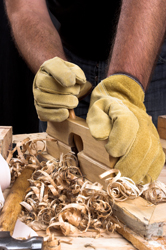Mutation risk from wood dust
Despite various studies to ascertain the effects of exposure to wood dust in the workplace, the genetic basis and biochemical mechanisms underlying the resulting pathologies have been largely ignored. To remedy this, with European funding for the aptly named project WOOD-RISK, researchers at the Finnish Institute of Occupational Health aimed to identify the molecular changes that actually cause sino-nasal cancer. Results from a large collection of sino-nasal tumours that had been examined using histopathological techniques were analysed. The tissue had been collected from over 400 patients in Denmark, Finland and France. The samples were taken from workers that had been employed in various sectors of the woodwork industry and had had contact with a variety of hardwoods. Perhaps as expected, gene TP53 (tumour protein 53) showed a very high frequency of mutations, in up to 80\;% of the sino-nasal tumours. Tumour suppressor protein p53 is a potent force preventing the cell from progressing to the cancerous state. The statistics showed that the highest incidence of mutation was found in adenocarcinoma samples where the cancer originates in glandular tissue. From a demographic point of view, the frequencies were found to be different for the three countries. the team of scientists also performed immunohistochemical analyses on the tumour tissue for further analysis. After allowing for factors involved such as exposure to tobacco smoke and the specific type of occupational exposure, the statistical relationship between contact with wood dust and mutations can be assessed. statistical and histopathological studies yielding data from mass studies can be used in many ways. Hazard control and assessment of health risks can be improved. Moreover, the figures can be used as a negotiating tool to reduce exposure limits in the workplace.







